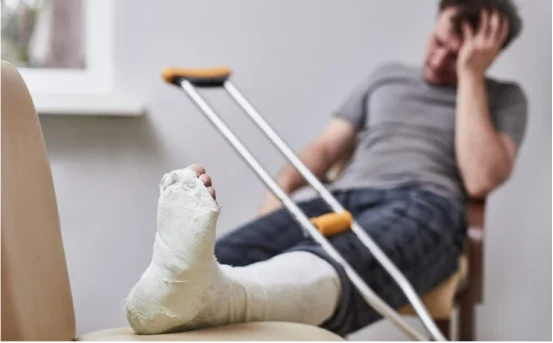Fractures, or broken bones, are among the most common injuries treated in hospitals and orthopedic clinics. While bones are designed to be strong and flexible, they can break under excessive pressure or due to certain health conditions. Fracture repair becomes necessary when the bone is unable to heal on its own or when the break affects mobility, alignment, or surrounding tissues. Understanding the causes of fractures is the first step toward preventing serious injuries and seeking timely treatment.
Causes of Fracture Repair
- Trauma or Accidents :- One of the most common causes of bone fractures is direct trauma or accidents. These can occur during road accidents, sports injuries, slips and falls, or workplace incidents. High-impact forces can cause bones to crack, break, or shatter, especially in vulnerable areas like the wrists, hips, arms, and legs. Fractures from trauma often require immediate medical attention, and in many cases, surgical repair is necessary to realign and stabilize the bone.
- Osteoporosis :- Osteoporosis is a medical condition in which bones become weak and brittle due to a loss of bone density. Even minor stress or a gentle fall can lead to fractures in people with osteoporosis. This condition is more common in older adults, particularly postmenopausal women. Common fracture sites related to osteoporosis include the hip, spine, and wrist. Treatment usually involves a combination of bone repair procedures, medications to strengthen bones, and lifestyle modifications to prevent further damage.
- Repetitive Stress or Overuse :- Stress fractures occur when repetitive motion or overuse puts continuous strain on a bone. This is especially common in athletes, dancers, and military recruits. Unlike sudden traumatic fractures, stress fractures develop gradually over time and often affect weight-bearing bones such as those in the lower legs and feet. Although they may start as small cracks, untreated stress fractures can worsen and require more intensive repair.
- Medical Conditions and Bone Diseases :- Certain medical conditions and diseases can weaken the bones, making them more susceptible to fractures. These include bone cancer, infections (like osteomyelitis), genetic bone disorders, and metabolic conditions such as hyperparathyroidism. In such cases, the bone may break spontaneously or with minimal trauma. Treating these fractures often requires not only surgical intervention but also managing the underlying disease to ensure proper healing and prevent recurrence.
- Poor Nutrition and Vitamin Deficiencies :- Lack of essential nutrients such as calcium, vitamin D, and magnesium can weaken bone structure over time. In children and young adults, poor nutrition during growth years can lead to underdeveloped bones, increasing the risk of fractures. In adults, long-term nutritional deficiencies can contribute to bone thinning and delayed healing after injury. In these cases, fracture repair may be supported by dietary correction, supplementation, and physical therapy in addition to orthopedic treatment.
- Age-Related Degeneration :- As people age, bones naturally lose density and strength, making them more prone to fractures. Aging also slows down the body’s ability to repair itself, including bone regeneration. Elderly individuals are especially at risk for hip and vertebral fractures, which can have serious consequences for mobility and independence. Timely fracture repair, physical rehabilitation, and preventive care play a crucial role in maintaining quality of life in older adults.
- Improper Healing or Previous Injuries :- Sometimes, a bone that has previously fractured may not heal correctly or fully a condition known as nonunion or malunion. In such cases, surgical fracture repair may be needed to correct the alignment and restore function. This situation may arise from poor initial treatment, premature activity, infection, or other complications during the healing process.
Conclusion
Fracture repair is a vital medical intervention aimed at restoring bone strength, alignment, and function after a break. From trauma and overuse to medical conditions and aging, various factors can lead to bone fractures that require treatment. Knowing the common causes helps in early identification, proper diagnosis, and timely repair, ensuring better recovery and long-term bone health. If you or a loved one experiences persistent pain, swelling, or inability to move a limb after an injury, it is essential to seek medical attention immediately for proper fracture assessment and repair.























